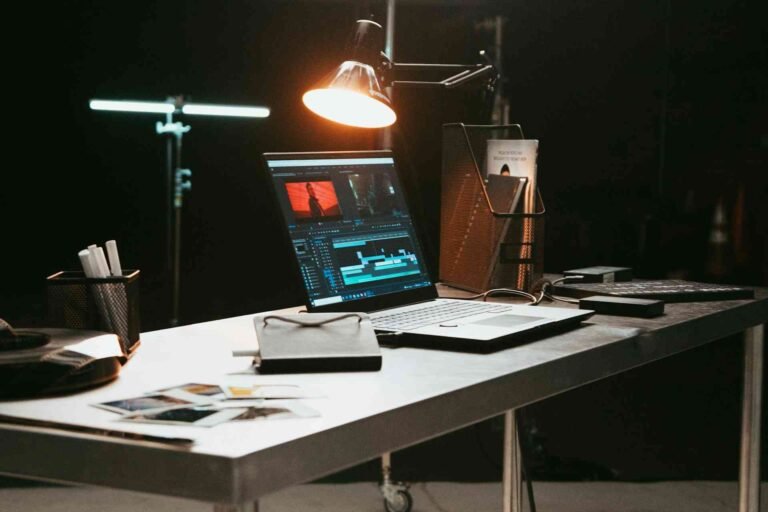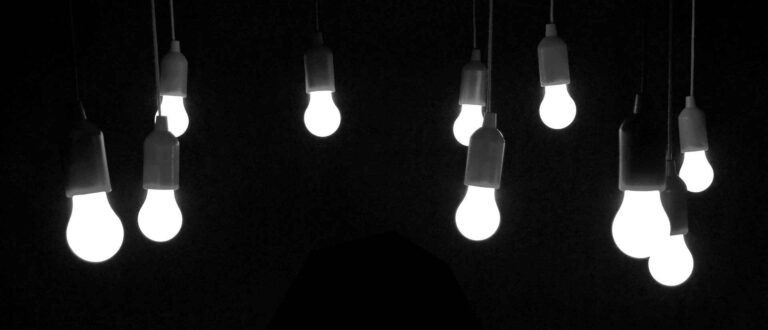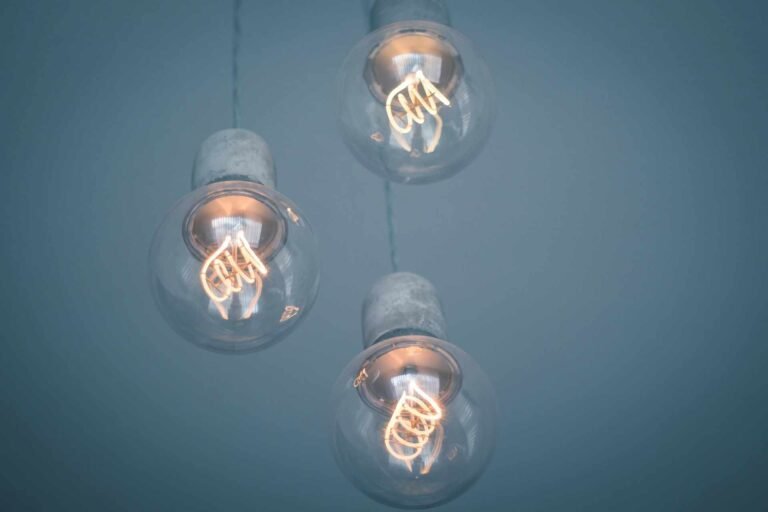Why LED Lights Give You Headaches (And What to Do)

You’re working late at your desk, everything seems fine, and then suddenly your head starts pounding like someone’s using your skull as a drum set. You look around, wondering what changed, and then it hits you: those bright LED lights might be the culprit behind your misery.
The relationship between LED lighting and headaches is more common than you might think, and understanding why this happens can save you from countless hours of unnecessary pain. Whether you’re dealing with occasional discomfort or regular migraines triggered by artificial lighting, we’re about to dive deep into everything you need to know about headaches from LED lights.
The Science Behind LED Light Headaches
Modern LED technology has revolutionized how we illuminate our spaces, but it’s also created some unexpected challenges for our wellbeing. Unlike traditional incandescent bulbs that produce light through heat, LEDs generate illumination through electronic processes that can create unique characteristics affecting our visual system.
The primary reason LED lights cause headaches lies in their light emission patterns. Most standard LEDs produce what’s called “blue-rich” light, which contains higher concentrations of blue wavelengths than natural sunlight. Our eyes and brain aren’t quite adapted to process these intense blue emissions for extended periods, especially in indoor environments where we can’t escape them.
Another significant factor is the way LEDs pulse or flicker. While this flickering happens too quickly for us to consciously notice, our nervous system still detects these rapid on-off cycles. This invisible strobe effect can trigger neurological responses that manifest as tension headaches or even full-blown migraines in sensitive individuals.
The intensity and directional nature of LED beams also plays a crucial role. Unlike the diffused glow of older lighting technologies, LEDs often create harsh contrasts between bright and dark areas, forcing our pupils to constantly adjust. This continuous accommodation creates eye strain that frequently develops into headache pain.
Why Some People Are More Susceptible to LED Headaches
Not everyone experiences LED light headaches with the same intensity, and there are several reasons why some folks seem more vulnerable than others. Understanding these factors can help you determine whether you’re at higher risk and need to take extra precautions.
People with existing migraine conditions often find that LED lights and migraines go hand in hand. The trigeminal nerve, which plays a major role in migraine pain, can be particularly sensitive to specific light wavelengths and patterns. When this nerve gets overstimulated by LED characteristics, it can trigger the cascade of events leading to a migraine episode.
Your age and visual health also influence susceptibility. As we get older, our eyes become less efficient at filtering harmful light wavelengths, making older adults more prone to LED-induced discomfort. Similarly, people with existing eye conditions like dry eyes, astigmatism, or previous eye surgeries may experience heightened sensitivity.
Hormonal fluctuations, particularly in women, can increase light sensitivity during certain times of the month or life stages. Stress levels, sleep quality, and overall health status also affect how well your nervous system handles challenging lighting conditions.
Interestingly, genetics play a role too. Some people inherit variations in genes that affect how their retinal cells respond to different wavelengths, making them naturally more sensitive to the blue light spectrum that LEDs emit abundantly.
Common Types of LED Light-Related Headaches
LED headaches don’t all feel the same, and recognizing the different types can help you identify triggers and find appropriate solutions. Each variety has distinct characteristics that point to specific underlying causes.
Tension-Type LED Headaches: These feel like a tight band wrapped around your forehead and temples. They typically develop gradually during extended exposure to LED lighting and are usually accompanied by neck and shoulder tension. The pain is generally mild to moderate but persistent, often described as a dull, pressing sensation.
LED Light Migraines: Much more intense than tension headaches, LED light migraines can include throbbing pain, nausea, and extreme light sensitivity. These often start on one side of the head and can last anywhere from a few hours to several days. The pain frequently worsens with continued light exposure and may be accompanied by visual disturbances.
Cluster Headaches Triggered by LEDs: Less common but extremely painful, these create intense burning or piercing sensations, usually around one eye. They tend to occur in patterns or clusters, happening at similar times each day when exposed to problematic lighting conditions.
Digital Eye Strain Headaches: When LEDs are combined with screen work, the resulting headaches often feel like pressure behind the eyes. These typically worsen throughout the day and may be accompanied by blurred vision, dry eyes, and difficulty focusing.
LED Colors and Their Impact on Headache Development
The color temperature and specific wavelengths of LED lights play a crucial role in whether they’ll trigger headaches. Understanding how different LED colors affect your comfort can help you make smarter lighting choices for your workspace and home.
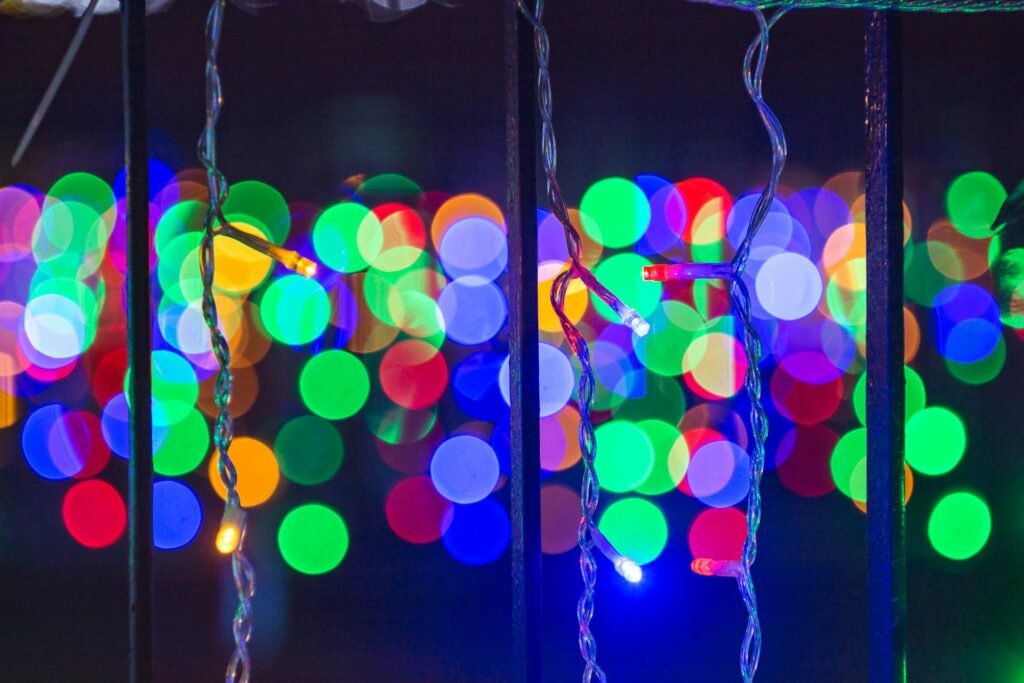
Cool white LEDs (5000K-6500K) tend to be the biggest culprits when it comes to LED lights causing headaches. These emit high levels of blue light, which penetrates deeply into the eye and can disrupt circadian rhythms while overstimulating photosensitive cells. Many office buildings and retail spaces use these cool LEDs because they appear “bright” and “energizing,” but prolonged exposure often leads to discomfort.
Warm white LEDs (2700K-3000K) generally cause fewer headache issues because they contain less blue light and more red/yellow wavelengths. These create a more relaxing atmosphere similar to traditional incandescent bulbs, making them better choices for areas where you spend extended time.
Surprisingly, green LED light for migraines has shown promise in some research as a potentially therapeutic option. Some migraine sufferers report that gentle green lighting can actually help reduce pain during an episode, though this varies significantly between individuals.
When selecting dimmable LED desk lamps, pay attention to their color temperature options. Models that allow you to adjust both brightness and warmth throughout the day can help minimize headache triggers while maintaining good visibility for work tasks.
| LED Color Temperature | Blue Light Content | Headache Risk | Best Use Cases |
|---|---|---|---|
| Cool White (6500K) | Very High | High | Short-term task lighting only |
| Daylight (5000K) | High | Moderate-High | Brief morning use |
| Neutral White (4000K) | Moderate | Moderate | General office lighting |
| Warm White (3000K) | Low-Moderate | Low-Moderate | Extended work periods |
| Soft White (2700K) | Low | Low | Evening and relaxation |
The Flicker Factor: Hidden Trigger Behind LED Headaches
One of the most insidious aspects of LED headaches is the role of invisible flicker. While we can’t see it happening, many LED lights rapidly turn on and off hundreds or thousands of times per second. This constant pulsing can create neurological stress that builds up over time, eventually manifesting as head pain.
Cheaper LED products often have more pronounced flicker issues because they use simpler driver circuits to convert AC power to the DC current LEDs require. These basic circuits don’t smooth out the electrical fluctuations as effectively, creating more dramatic brightness variations.
The frequency of this flicker matters significantly. LEDs that pulse at rates between 3-70 Hz are most likely to cause problems because this range can interfere with brain wave patterns and trigger photosensitive responses. Higher frequency flickers (above 1000 Hz) are generally less problematic, though sensitive individuals may still react to them.
Quality USB powered desk lights often include better driver circuits that minimize flicker, making them more comfortable for extended use. When shopping for LED lighting, look for products that specifically mention “flicker-free” operation or low flicker percentages.
You can actually test for flicker using your smartphone camera. Point it at an LED light source and look at the screen, if you see horizontal bands rolling across the image, that light has noticeable flicker that could be contributing to your headaches.
Brightness Battles: When LED Intensity Overwhelms Your Eyes
LED technology can produce incredibly intense light output from relatively small sources, which creates unique challenges for comfortable illumination. Understanding how brightness levels affect headache development helps you optimize your lighting setup for maximum comfort.
The human eye adapts to average lighting conditions in any given space, but LEDs can create extreme contrasts that force constant readjustment. When you have very bright LED spotlights next to darker areas, your pupils are constantly dilating and constricting as you look around. This accommodation stress accumulates throughout the day, often resulting in tension headaches by evening.
Motion sensing table lamps can actually help reduce this issue by providing consistent, gentle illumination that activates when you enter an area. This prevents the jarring transition from darkness to bright LED light that often triggers immediate headache responses.
The positioning of your LED lights matters enormously too. Direct glare from overhead LEDs or poorly positioned desk lamps creates hot spots that strain your visual system. Learning how to position your desk lamp correctly can eliminate many LED-related headache triggers while maintaining good task lighting.
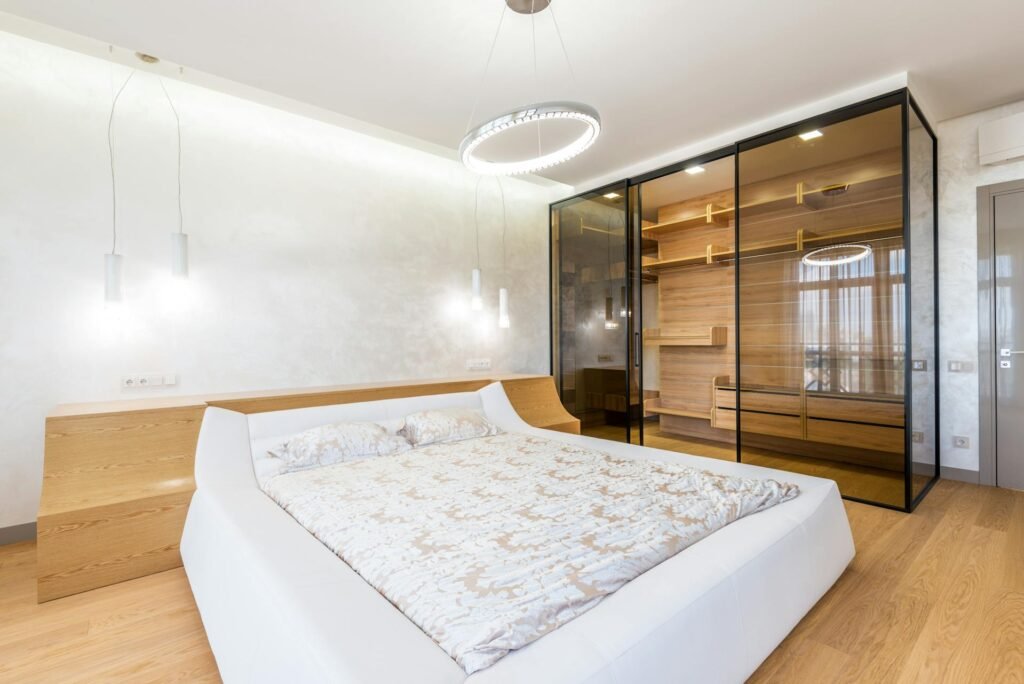
Consider the total light load in your space as well. Multiple LED sources, even individually comfortable ones, can create cumulative stress when combined. This is particularly relevant in modern offices where overhead LEDs, desk lamps, computer screens, and ambient lighting all contribute to your overall light exposure.
Creating a Headache-Free LED Environment
Transforming your space into a comfortable, LED-friendly environment doesn’t require completely abandoning efficient lighting technology. With the right approach, you can enjoy the benefits of LEDs while protecting yourself from headache triggers.
Start by conducting a lighting audit of your most-used spaces. Note where you experience headaches most frequently and examine the LED sources in those areas. Pay attention to color temperature, brightness levels, and any direct glare sources that might be contributing to your discomfort.
Layer your lighting instead of relying on single, intense LED sources. Combine gentle ambient lighting with focused task illumination to create more natural light distribution. This approach reduces the stark contrasts that force your eyes to constantly readjust.
Invest in quality LED products with good flicker performance and adjustable settings. While they may cost more initially, the reduction in headache frequency and improved comfort make them worthwhile investments for your health and productivity.
Natural Solutions and Protective Measures
Beyond optimizing your LED setup, there are several natural approaches you can use to reduce headache frequency and severity when dealing with challenging lighting conditions.
Take regular breaks from intense LED environments. The 20-20-20 rule works well: every 20 minutes, look at something 20 feet away for at least 20 seconds. This gives your visual system a chance to relax and reset, preventing the buildup of accommodation stress.
Stay hydrated throughout the day, as dehydration compounds light sensitivity and makes headaches more likely. Many people don’t realize that even mild dehydration can significantly increase their susceptibility to LED-triggered head pain.
Consider blue light filtering glasses for extended LED exposure periods. While the research on their effectiveness is mixed, many people report reduced eye strain and fewer headaches when wearing them in LED-heavy environments.
Practice good posture and neck positioning, especially when working under LED lighting. Poor ergonomics can create muscle tension that combines with light-induced stress to trigger more severe headaches.
Manage your overall stress levels through regular exercise, adequate sleep, and relaxation techniques. High stress makes your nervous system more reactive to environmental triggers like problematic LED lighting.
When to Seek Professional Help
While most LED headaches can be managed through environmental modifications and lifestyle adjustments, some situations warrant professional medical attention. Recognizing these warning signs helps ensure you get appropriate care when needed.
Seek medical evaluation if your LED light headaches are becoming more frequent, severe, or different in character. Changes in headache patterns can indicate underlying conditions that need proper diagnosis and treatment.
If you’re experiencing visual disturbances, severe nausea, or neurological symptoms along with your LED-triggered headaches, consult with a healthcare provider promptly. These symptoms can indicate more serious conditions that require professional management.
Consider seeing an eye care professional if you suspect vision problems are contributing to your LED sensitivity. Uncorrected refractive errors, dry eyes, or other ocular conditions can make LED headaches much worse and often improve dramatically with proper treatment.
Persistent headaches that significantly impact your daily activities, work performance, or quality of life deserve medical attention regardless of their suspected triggers. A healthcare provider can help determine whether your symptoms are purely LED-related or part of a broader headache disorder.
Frequently Asked Questions
Can LED lights really cause headaches?
Yes, LED lights can definitely cause headaches through several mechanisms including blue light exposure, invisible flicker, brightness contrasts, and direct glare. The intensity and specific characteristics of LED lighting can overstimulate your visual and nervous systems, leading to various types of head pain.
Why do some LED lights give me headaches while others don’t?
Different LED products have varying color temperatures, flicker rates, and light quality characteristics. Cheaper LEDs often have more pronounced flicker and higher blue light content, making them more likely to trigger headaches. Quality, flicker-free LEDs with warmer color temperatures typically cause fewer problems.
What color LED lights are best for preventing headaches?
Warm white LEDs (2700K-3000K) generally cause the fewest headaches because they contain less blue light. Some people also find that gentle green lighting can be soothing during migraine episodes, though responses vary individually.
How can I tell if my LED lights are flickering?
Point your smartphone camera at the LED light source and look at the screen. If you see horizontal bands rolling across the image, that indicates noticeable flicker. You can also pay attention to any subtle strobe effects when moving your hand quickly under the light.
Do LED desk lamps cause more headaches than overhead LED lighting?
It depends on positioning and usage. LED desk lamps can cause headaches if positioned poorly or too bright, but they can actually help reduce headaches when used to eliminate harsh shadows and provide focused task lighting that reduces overall eye strain.
Should I avoid LED lights completely if I get headaches?
You don’t need to avoid LEDs completely. Instead, focus on choosing high-quality, flicker-free LEDs with warm color temperatures and adjustable brightness. Proper positioning and using multiple light sources to avoid harsh contrasts can make LEDs comfortable for most people.
Finding Your Perfect LED Balance
Dealing with headaches from LED lights doesn’t mean you have to live in the dark or return to inefficient lighting technology. The key lies in understanding how different LED characteristics affect your individual sensitivity and making informed choices about the lighting products you bring into your space.
Start small with your changes. Replace the most problematic LED sources first, typically those in areas where you spend the most time or experience headaches most frequently. As you find solutions that work, you can gradually optimize your entire lighting environment.
Don’t forget that good lighting is an investment in your health, productivity, and overall quality of life. The few extra dollars spent on quality, comfortable LED products pays dividends in reduced headache frequency and improved daily comfort.
Looking for more? Check out our desk lighting category for more articles and guides that may interest you!
Featured image credit: Photo by Andrea Piacquadio on Pexels
This content is for informational purposes only. Please verify current information directly on the retailer’s site before purchasing.



